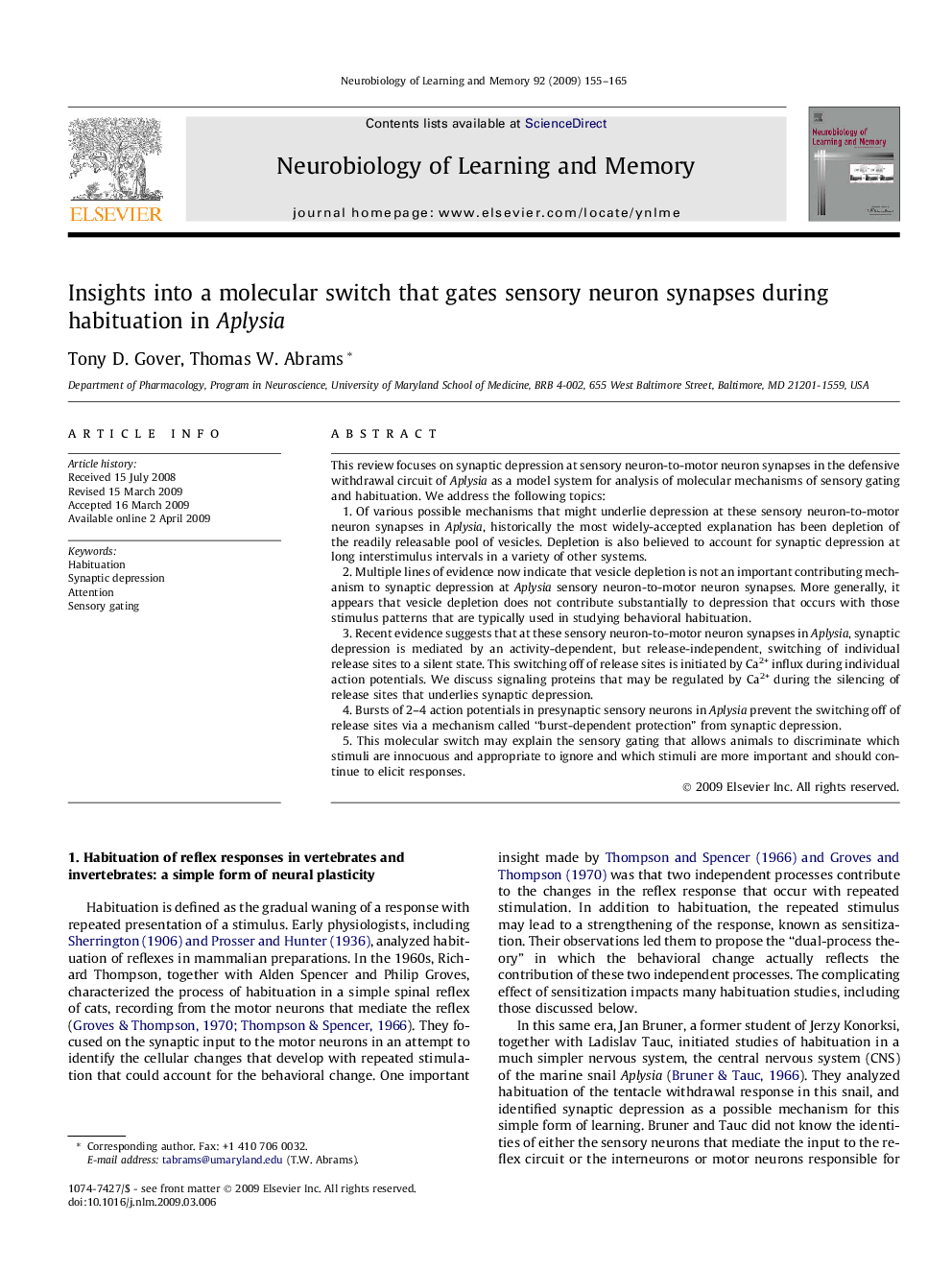| کد مقاله | کد نشریه | سال انتشار | مقاله انگلیسی | نسخه تمام متن |
|---|---|---|---|---|
| 936790 | 1475203 | 2009 | 11 صفحه PDF | دانلود رایگان |

This review focuses on synaptic depression at sensory neuron-to-motor neuron synapses in the defensive withdrawal circuit of Aplysia as a model system for analysis of molecular mechanisms of sensory gating and habituation. We address the following topics:1. Of various possible mechanisms that might underlie depression at these sensory neuron-to-motor neuron synapses in Aplysia, historically the most widely-accepted explanation has been depletion of the readily releasable pool of vesicles. Depletion is also believed to account for synaptic depression at long interstimulus intervals in a variety of other systems.2. Multiple lines of evidence now indicate that vesicle depletion is not an important contributing mechanism to synaptic depression at Aplysia sensory neuron-to-motor neuron synapses. More generally, it appears that vesicle depletion does not contribute substantially to depression that occurs with those stimulus patterns that are typically used in studying behavioral habituation.3. Recent evidence suggests that at these sensory neuron-to-motor neuron synapses in Aplysia, synaptic depression is mediated by an activity-dependent, but release-independent, switching of individual release sites to a silent state. This switching off of release sites is initiated by Ca2+ influx during individual action potentials. We discuss signaling proteins that may be regulated by Ca2+ during the silencing of release sites that underlies synaptic depression.4. Bursts of 2–4 action potentials in presynaptic sensory neurons in Aplysia prevent the switching off of release sites via a mechanism called “burst-dependent protection” from synaptic depression.5. This molecular switch may explain the sensory gating that allows animals to discriminate which stimuli are innocuous and appropriate to ignore and which stimuli are more important and should continue to elicit responses.
Journal: Neurobiology of Learning and Memory - Volume 92, Issue 2, September 2009, Pages 155–165